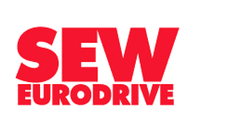Engineering students develop future technology
| Engineering students develop future technology | 68 KB | Download | |
| 2 Billion can being produced annually by Nampak DivFood alone | 1.29 MB | Download | |
| Engineering students develop future technology | 100.39 KB | Download | |
| Students will need to design a “Game Changer” for the food and beverage industry in 2015. | 951.32 KB | Download |
The annual PneuDrive Challenge aims to provide mechanical, electrical and mechatronic students with the opportunity to combine theory with the latest drive engineering technology.
They are expected to come up with a concept design and business case, which involves cost analyses and the feasibility of companies using their designs.
Three teams at WITS are working hard to win top prize – a ten-day all expenses paid trip to Germany, where the winners will present their design to the head office of the sponsor company. The competition sees universities receiving state of the art equipment for their laboratories from the sponsor as part of their prize.
Autonomous robotic cleaner
The first team consists of Vuledzani Madala, Portia Sibambo, Tisetso Ramolobe and Nkosinathi Shongwe. They are designing a robotic floor cleaner for hazardous environments.
The team came up with the concept of the robot after visiting a brewery in Pretoria and identifying the need for this design. They all contributed different concepts before agreeing on a final design.
The robot uses a mechanical broom and mop which extends to the floor and absorbs liquid, while pushing solid waste inside its storage bin. The autonomous cleaner is able to separate liquid waste from solid waste without assistance.
Their design is focused on assisting industrial companies to avoid the costs of paying external cleaners, however, they must also support their business case by including cost comparisons between using their robot, and employing cleaners.
Sibambo, who is the leader of the group, focused on the pneumatic system while the others split the drawing, design and research among themselves. “The team has finished the basics of the design and is looking to using 3D printing for the outer design of their robot. The selection of components will depend on the engineering calculations and system requirements that the group does,” she explains.
Turning waste into energy
The second team consists of Craig Daniel, Micha Dedekind and Richard Grieves. Their project is based on waste reduction, by converting organic waste to methane through anaerobic digestion.
They aim to cut costs for businesses by giving them the opportunity to use renewable energy. Daniel indicates that they are focusing on the elements that need to be controlled in order to get the pH right within the tanks and to ensure that they do not over-pressurise.
“We will use commercially-sold, low-pressure storage units which will be stored above ground, a few metres away from the building, to prevent incidents. We have had to learn a few new things, such as; the inner workings of a reactor, explosion-proof equipment and instrumentation, in addition to using a gas separator, as well as the regulations involving double bladder storage of the methane,” he comments.
For their business case, Daniel’s team claims that their design will help companies to not only get rid of their waste in-house, but to convert that waste into a bio gas that can be used for other purposes such as heating. Although they admit that it would be costly to set up, they insist that the long-term cost benefits outweigh the set-up costs.
Depalletizer for bottle recycling
The third team consists of Muhammed Mangera, Markus Janse van Rensburg and Mikhail Villet, who are designing an overhead arm that picks up plastic sheets and removes them from empty bottles inside pallets. Janse van Rensburg explains that the main focus of the design is the recycling of bottles. “We would like to target companies that do depalletising manually, as our design eliminates the process of having to unpack, clean, refill and thereafter recycle.”
In deciding on this invention, the team looked at small to medium sized factories and how the bottles are tipped as they are transported on the conveyor, resulting in breakages. Their invention will not tip the bottles, and is also versatile in that it can be used for any bottle shape.
“Our design is compact, high-performance and requires minimal maintenance. As a result, we believe we can improve productivity, resulting in time and cost savings,” Janse van Rensburg adds.
All three teams from WITS will send through their designs for judging by 8 October 2015, along with teams from other universities nationwide. The winning team is due to be announced in December 2015.
SMC Pneumatics South Africa has announced that they will be the pneumatic partner for the competition going forward.
For more information on the 2015 PneuDrive Challenge, and past competitions, visit www.pneudrive.co.za
Ends
Connect with SEW-EURODRIVE on Facebook to receive the company’s latest news:
www.facebook.com/SEWEurodriveSA
Media Contact
Jana Klut
NGAGE Public Relations
Phone: (011) 867-7763
Fax: 086 512 3352
Cell: 074 111 4900
Email: jana [at] ngage [dot] co [dot] za
Web: www.ngage.co.za
Browse the NGAGE Media Zone for more client press releases and photographs at http://media.ngage.co.za

